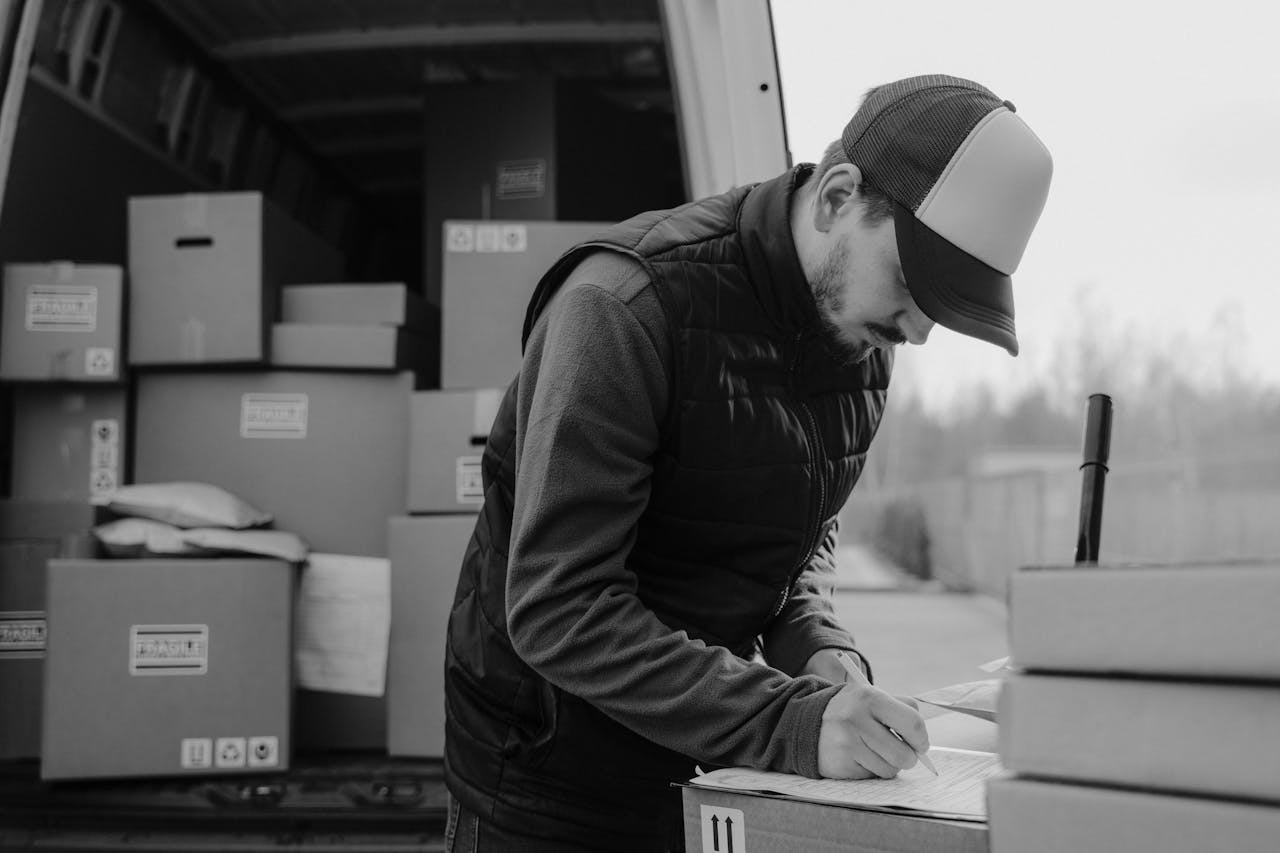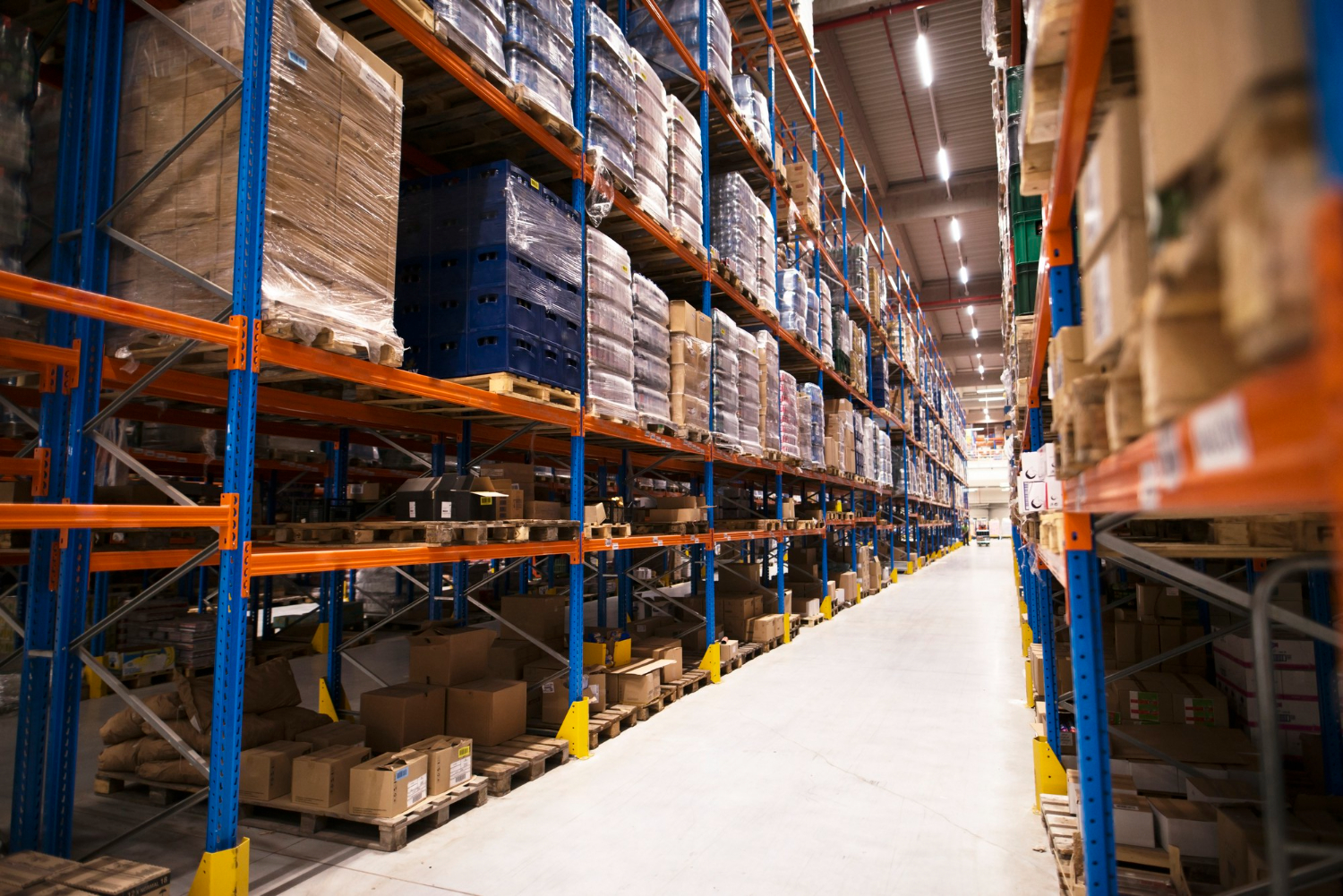Order fulfilment isn’t just another task on your to-do list; it’s one of the most important parts of keeping customers happy and your business running smoothly. In a world where people expect fast shipping and constant updates, how you handle orders can make or break your brand.
If your fulfilment process is slow or messy, it doesn’t just delay deliveries; it can cost you sales and trust. But when things run like clockwork? You not only meet expectations, you build loyalty that lasts.
What Is Order Fulfilment?
Order fulfilment is what happens behind the scenes after a customer places an order — it’s the part that ensures they actually get what they paid for. When done right, it means orders arrive on time and in perfect condition, which builds trust and keeps people coming back.
But when things go wrong? Delays, wrong items, and frustrated customers can do real damage to your reputation.
Whether you’re running a small online shop or managing a growing e-commerce business, how you handle fulfilment has a direct impact on your bottom line — and your brand.
Understanding How Your Order Gets Delivered
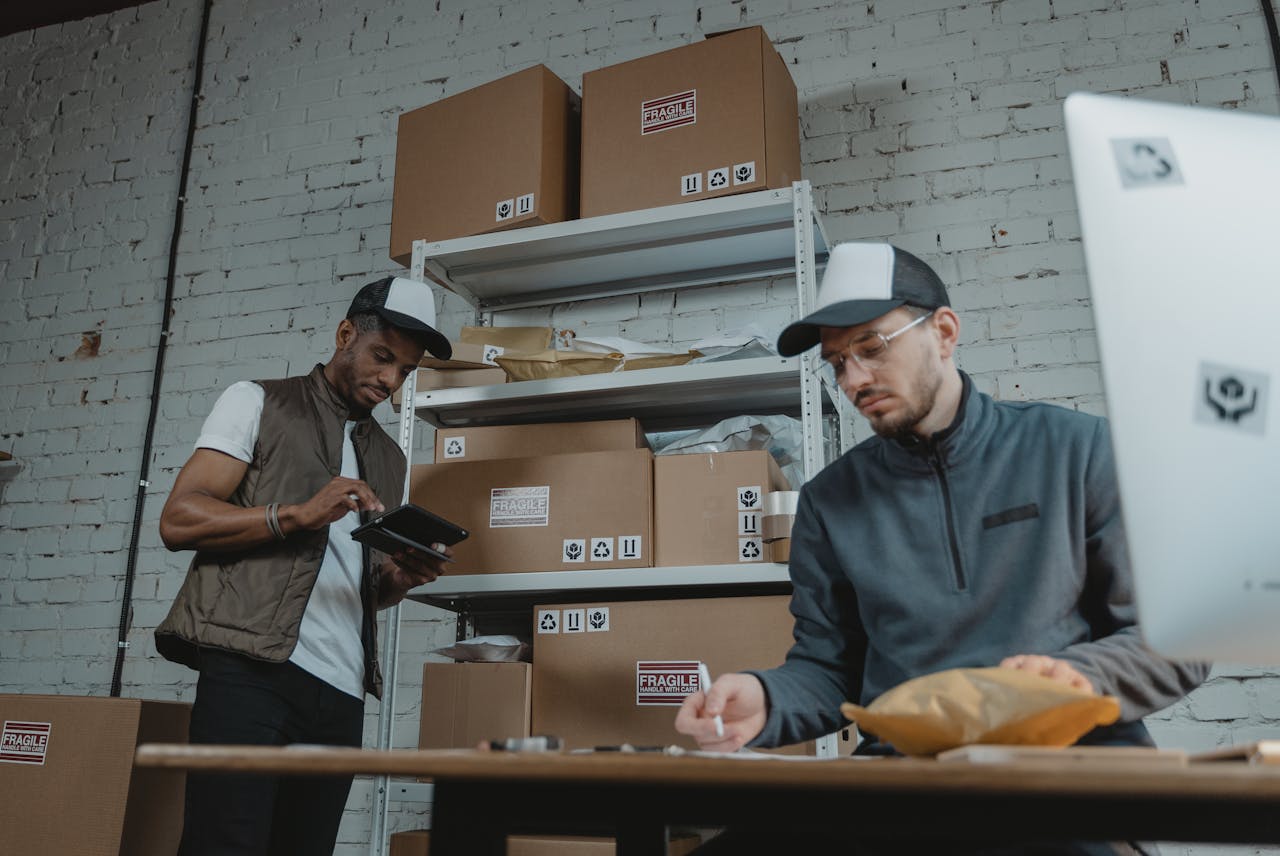
Order fulfillment covers everything that happens after a customer clicks "buy", all the steps that turn that online order into a package at their front door. It includes picking and packing the right items, keeping track of inventory, double-checking quality, and finally getting the order shipped out.
For smaller businesses, most of this usually happens in one place, maybe even your home office or a small warehouse. But as your business grows, fulfilment might involve multiple locations or even outside partners to help with storage and shipping.
The typical flow goes like this: you source or manufacture your products, store them, track inventory, process each order, check everything’s in good shape, then ship it out. Simple on paper, but every step matters.
No matter your setup, the goal stays the same: get the right products to the right people, quickly and without mistakes. Whether you handle it all yourself or team up with a fulfilment service, having a smooth, well-organized system is key to keeping customers happy and coming back.
Order Fulfilment Process: How Does It Work

Order fulfilment starts the moment your products show up at your space — whether that’s a full-on warehouse, a rented storage unit, or just shelves in your back room. First things first: you’ve got to check what came in. Are the right items there? Are they in good condition? This step might seem small, but it saves you a lot of future headaches. You don’t want to realize something’s missing when someone’s already paid for it.
Once everything looks good, it’s time to get your stock organized and stored. The idea isn’t to let things sit around forever but to keep them easy to find and ready to go. The neater and more efficient your setup, the faster you can move when orders come in.
Here’s how the typical flow goes from there:
- Receiving and inspection: Give incoming products a once-over. Count them, check for damage, and make sure everything’s what you expected. This is your chance to catch mistakes before they become problems.
- Storage: Find a home for each item. Whether you’re using labelled bins, shelves, or a full inventory system, the key is quick access — so you’re not scrambling every time someone places an order.
- Order processing: When a customer hits “Buy,” your system takes over. It automatically pulls in the order details and tells your team (or software or robot) what needs to be packed.
- Picking: Time to grab the goods. Using info like SKU, colour, size, or location, you (or your team) pick the ordered items. This step needs to be spot-on — mixups here lead to annoyed customers.
- Packing: Next, you pack things up. The goal? Protect the item, keep the package as small and light as possible, and make it look good. Smart packing helps with shipping costs and makes sure everything arrives safely.
- Shipping: Off it goes! You hand the package over to a carrier like ShipWithMina, UPS, USPS, or FedEx. Depending on where the customer is, the shipment might pass through a few hands before it reaches their door.
- Last-mile delivery: This is the final leg of the journey — often handled by a local courier. It’s where your product finally lands on the customer’s porch (or office desk or apartment lobby).
- Returns (if they happen): Sometimes things come back. Maybe the item didn’t fit or wasn’t what the customer expected. When that happens, it’s inspected and sorted, either restocked, repaired, or recycled, depending on its condition.
When all these pieces work together smoothly, your customers get exactly what they ordered, when they expected it — and that builds trust, loyalty, and a good reputation. And that’s really what great fulfilment is all about.
Why Timely Delivery Matters to Your Business
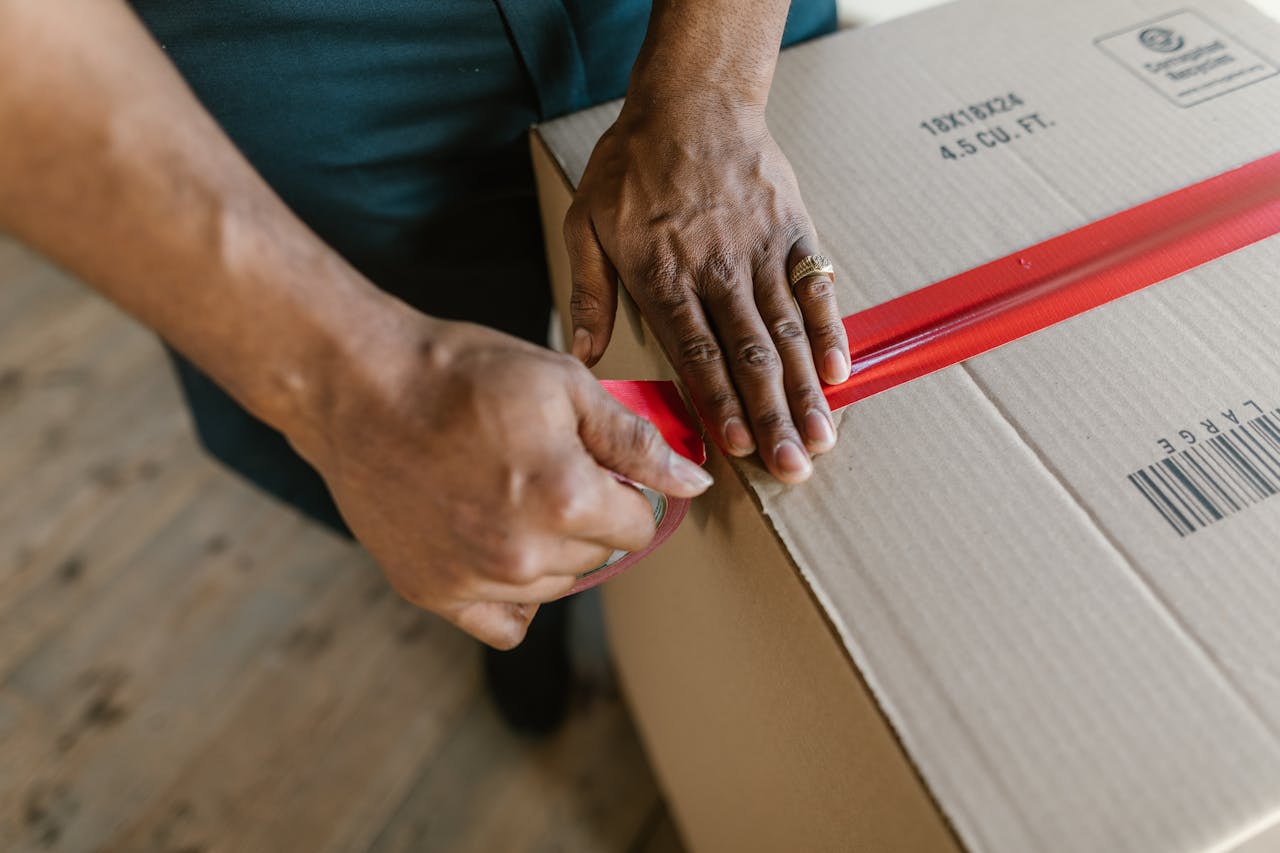
Selling a product doesn’t end at checkout — it ends when the customer gets their order. That’s why order fulfilment is so important.
When your process is fast, accurate, and reliable, customers are more likely to trust you and come back again.
Here’s what good fulfilment helps you achieve:
- Faster delivery times
- Fewer mistakes in orders
- Better control of your stock
- Happier, more loyal customers
Getting this part right keeps your business running smoothly and your customers satisfied.
Order Fulfilment Challenges
1. Stock Control and Inventory Accuracy
Running out of products can quickly disappoint customers and hurt your reputation. And when the mistake comes from poor tracking or internal errors, it’s even harder to bounce back. While people might forgive delays caused by things like bad weather or shipping issues, they’re less patient when the problem’s on your end.
To avoid this, it's important to keep your inventory records accurate and updated in real-time. Knowing exactly what you have on hand helps prevent stockouts and missed sales.
2. Forecasting and Managing Demand
Holding too much stock costs you money. But not having enough can mean missed sales. Finding that balance is tricky without good data.
Using past trends and customer behaviour to predict what you'll need, and when, can help you stay prepared without overloading your shelves or tying up your cash in slow-moving products.
3. Shipping Coordination and Delivery Efficiency
Late deliveries, damaged goods, or messy packaging can ruin a customer’s experience. And it often leads to fewer repeat orders.
To avoid this, keep a close eye on the shipping process — from when the order is packed to the final delivery. Clear coordination and careful packaging go a long way in making sure products arrive quickly and in one piece.
4. Supply Chain Operations and Execution
If you rely too much on one supplier or one part of your process, any hiccup, like a strike or stock shortage, can throw everything off.
A strong supply chain setup means working with reliable partners, using tools to manage inventory and orders, and keeping things running smoothly behind the scenes. The more organised your systems are, the less likely you’ll face major delays.
Order Fulfilment Best Practices
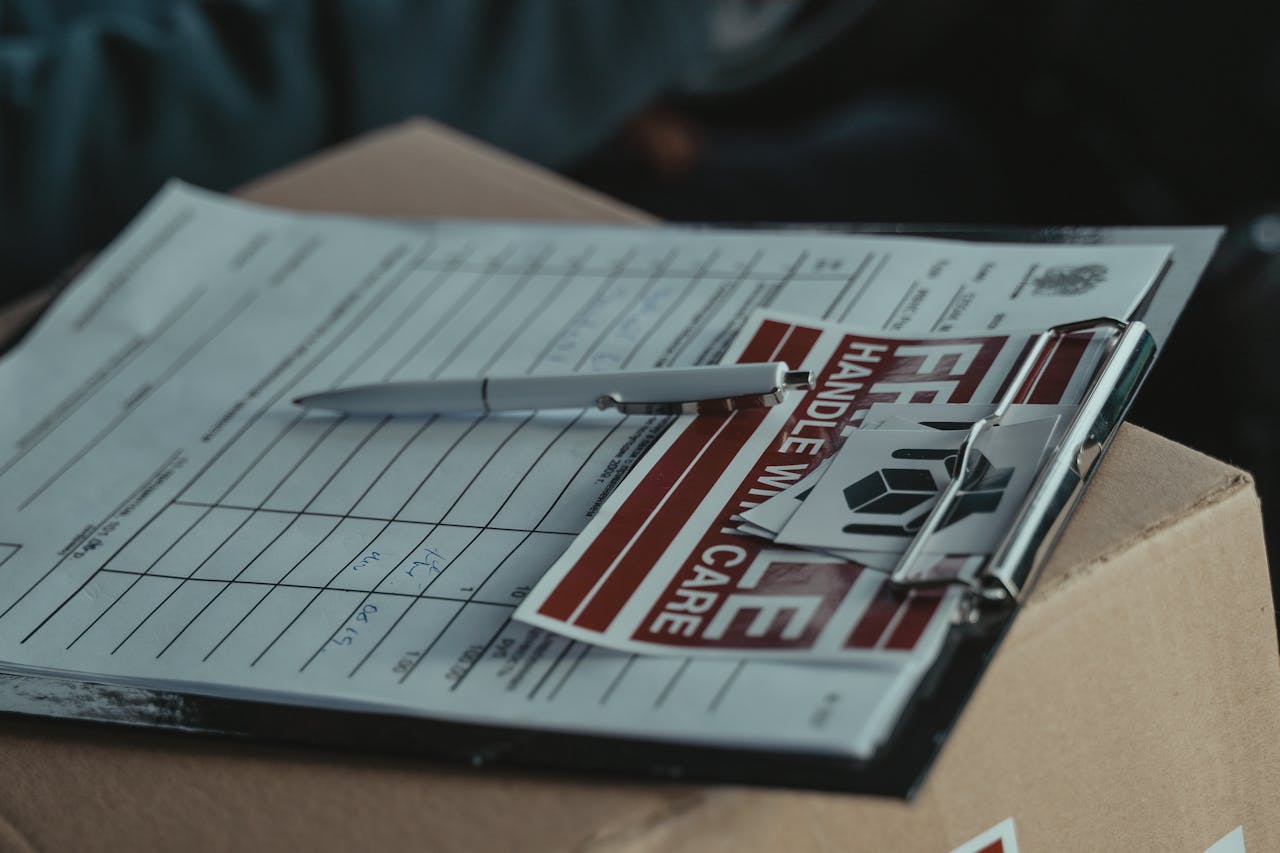
1. Establish a strong foundation
Make sure new stock gets checked in quickly and correctly. When shipments arrive, inspect everything right away and send back any damaged items. This keeps your inventory accurate and helps avoid delays later when customers place orders.
2. Optimise warehouse layout to speed up picking
Keep your bestsellers close to your packing area so they’re easier to grab. Items that don’t sell as often can go toward the back. This setup saves time, reduces back-and-forth movement, and helps your team work more efficiently.
3. Streamline delivery and logistics planning
Choose shipping options that make sense for your business, fast enough to satisfy customers, but not so expensive that it eats into your profits. It also helps to have a backup plan in case a carrier raises prices or hits delays.
4. Implement automation where possible
Automating repetitive tasks (like sorting orders or printing shipping labels) can save you time and reduce errors. It doesn’t have to be high-tech; even small tools or systems can help make things easier and faster for your team.
How to Select the Best Fulfilment Approach
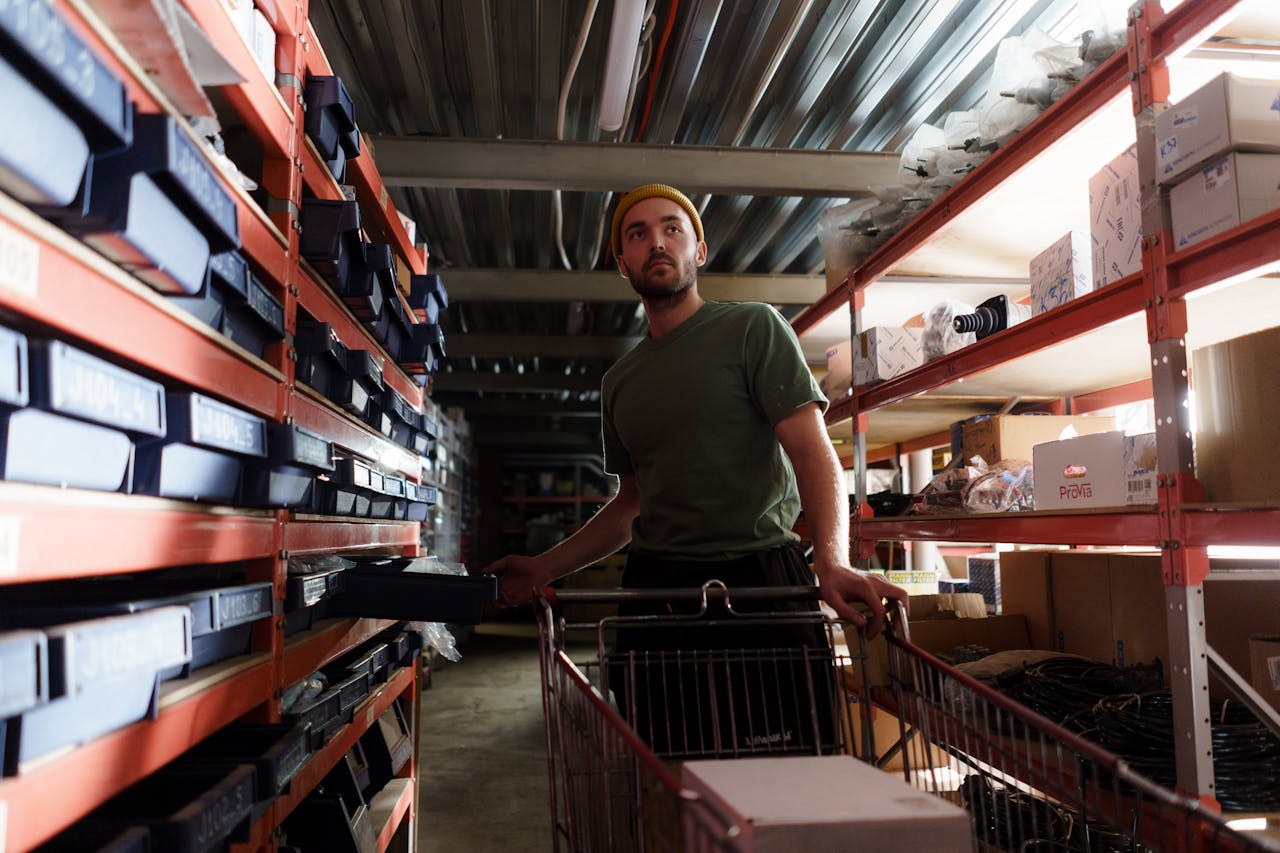
Figuring out how to handle order fulfilment really comes down to one thing: what works best for you right now.
If you’ve got a solid team, enough space, and the right tools, handling fulfilment yourself can be a great move. You’ll have full control over the whole process, from packing to shipping, and it might even save you money in the long run.
But if you’re kind of in the middle, maybe you can do some of it but not everything. A hybrid setup could be the sweet spot. You pack and manage what you can, then let a fulfilment partner handle the rest. It’s a good way to stay involved without getting overwhelmed.
Now, if you're swamped, short on space, or just not into logistics, outsourcing everything is totally fine. In fact, it might be the best move. A fulfilment company takes care of the packing, storing, and shipping so you can stay focused on making and selling your products.
Here are a few things to think about when deciding:
- What kind of products are you selling? Are they fragile, bulky, or time-sensitive?
- Do you have the time, space, and people to handle fulfilment on your own?
- What would it cost to do it yourself vs. hiring help—and where could you actually save?
At the end of the day, the “best” method is the one that fits your current setup, helps your business run smoother, and keeps your customers happy. Don’t overthink it—start where you are and adjust as you grow.
How ShipWithMina Boosts Your Fulfilment Strategy
If you're scaling up or ready to hand off fulfilment, ShipWithMina has tools that keep things efficient, accurate, and affordable.
1. AI-Powered Pick & Pack
Mina’s warehouses use smart AI systems that guide pickers with optimised routes and help packers choose the right box size every time. That cuts down errors and speeds up your operations, up to 90% faster order processing compared to manual setups.
2. Smart Warehousing & Inventory Management
They operate across 20+ warehouses in China, plus locations in the U.S., Canada, Australia, and Europe. This means your products can ship from where it makes the most sense—minimizing distance and delivery time. Plus, Mina keeps your inventory updated in real-time, so you avoid overselling or running unexpectedly low.
3. Exclusive Shipping Routes
Mina secures its own charter flights and dedicated carrier lines. That means reliable delivery schedules and lower shipping rates than standard commercial options.
4. Global Fulfilment in One Platform
Whether you're shipping domestically or internationally, Mina combines fulfilment, inventory, packing, and shipping into one integrated experience—including clear tracking—and handles returns smoothly too.
5. Cost Efficiency at Scale
Thanks to their volume-based deals, warehouse automation, and direct shipping routes, Mina typically lowers your logistics cost by around 30%—while letting you ship up to five times more orders than you could before.
Bottom line
ShipWithMina isn’t just a 3PL, it’s a fulfilment partner that combines AI, global warehousing, and its own shipping lines into one efficient package. That means faster deliveries, fewer mistakes, real-time inventory updates, and smoother returns—all while keeping your costs in check.
Order Fulfilment Models
Different Ways to Handle Your Order Fulfilment
When it comes to getting your products into customers’ hands, there isn’t just one way to do it. You’ve got four main options—and the best one really depends on your resources, product type, and how much control you want over the process.
a) In-House Fulfilment
This is the hands-on route. You (or your team) handle everything from storing inventory to packing and shipping orders—and even dealing with returns. It gives you full control over quality and speed, but it also means you’ll need space, staff, and time to manage it all.
b) Third-Party Fulfilment
Here, you hand things off to the pros. A Third Party fulfilment company takes care of warehousing, packing, shipping, and returns for you. It’s great if you’d rather focus on other parts of the business, but it does mean giving up a bit of control and trusting someone else to keep things running smoothly.
c) Drop Shipping
Drop Shipping has super low effort on your end. The supplier holds your inventory and ships directly to your customers. You don’t deal with stock, packing, or shipping at all. It’s easy to start and low cost, but the trade-off is slower delivery times and less control over stock levels.
d) Hybrid Fulfilment
This is a mix-and-match approach. You might ship fast-moving products from your own space, use a fulfilment partner during high-demand seasons, and drop ship items that are bulky or less popular. It gives you flexibility, but you’ll need to stay organized to keep everything working smoothly.
Tips to Improve Order Fulfilment
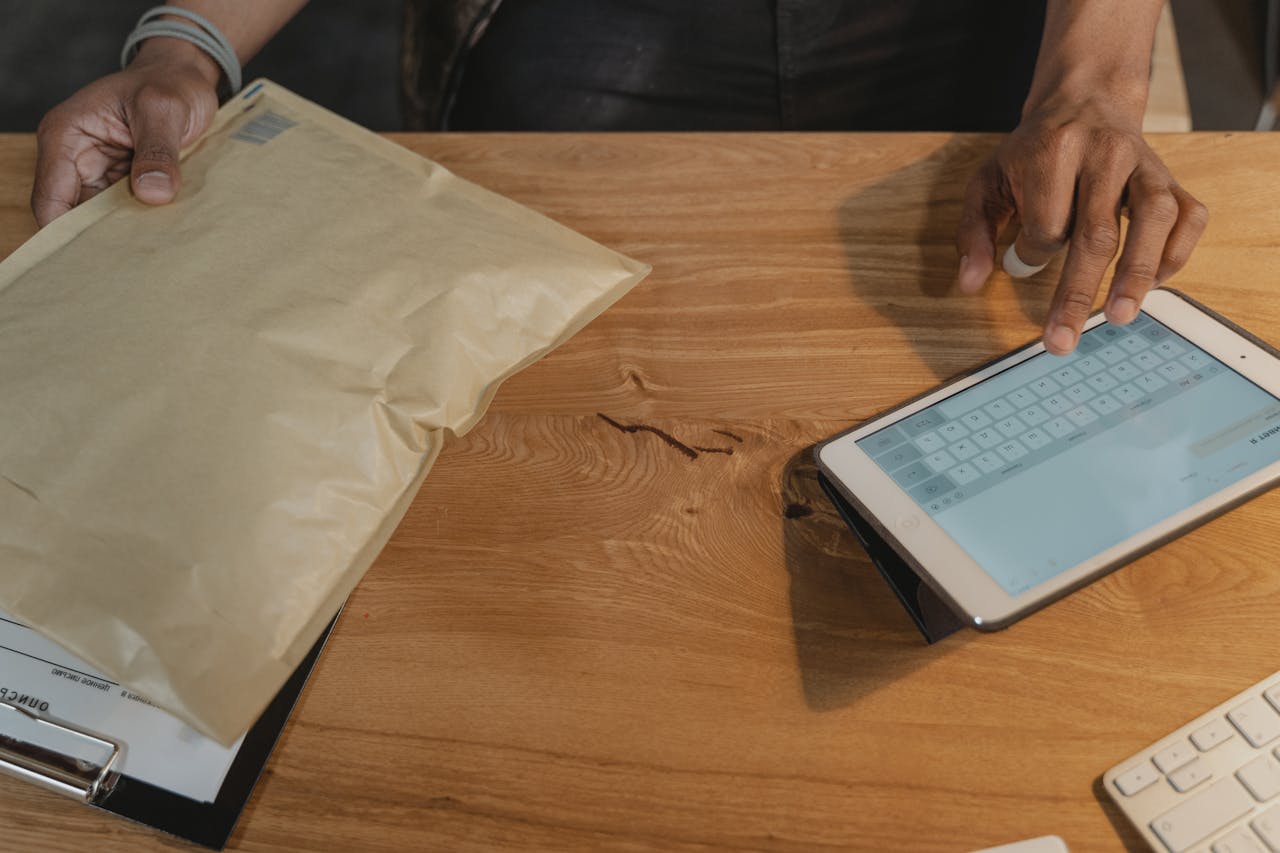
If you want your order fulfilment process to run like clockwork, here are a few key things you can do:
- Use the right system. Invest in an easy-to-use ERP (Enterprise Resource Planning) system that lets you track everything—from incoming orders to shipping. The more visibility you have, the fewer surprises you'll run into.
- Connect with your suppliers. Integrating your system with your vendors helps automate things like inventory restocking and payments. This cuts down on back-and-forth emails and speeds up the whole process.
- Keep customers in the loop. Don’t just promise fast delivery—make sure you’re upfront about what’s realistic. And if something goes wrong, let customers know quickly. Being honest builds trust.
- Watch your inventory. Too much stock ties up cash, and too little leads to delays. Use inventory tools to stay balanced and avoid running out or overstocking.
- Pick smarter, not harder. Whether you're picking one order at a time or batching a bunch together, choose a method that saves time and reduces mistakes.
- Work closely with your shipping partner. Treat them as a long-term partner, not just a delivery service. Good communication can help avoid delays and extra costs.
- Be ready for returns. Things happen—wrong sizes, damaged items, change of mind. Make sure your team knows how to handle returns and customer issues quickly and fairly.
Enhance Your Order Fulfilment Using Order Management Solutions
Adding solid order management software to your fulfilment process can really take the pressure off. Instead of juggling different tools or doing things manually, you get one platform that handles everything—order entry, inventory tracking, shipping, returns—you name it. That means fewer mistakes, less confusion, and a clear view of where every order stands at any given time.
The right system even helps with trickier situations like partial shipments or drop shipping. And since everything’s cloud-based, your team can update or check on orders from anywhere, which keeps things moving without delays.
Here’s what you gain:
- Easier tracking: You can follow every order from the moment it’s placed to the time it’s delivered—all in one place.
- Better inventory control: No more guesswork. The system updates stock levels automatically, so you avoid both running out and over-ordering.
- Simplified returns: Managing returns becomes less of a headache, which your customers will appreciate.
- Worldwide coordination: If you’re shipping to different regions, the software helps keep it all organised.
The bottom line? It cuts out a lot of manual work, gives you helpful insights, and helps keep costs in check. Whether you're just starting out or looking to scale, having the right tech in place can make a big difference in how smoothly your operations and customer experience run.
FAQs about Order Fulfilment
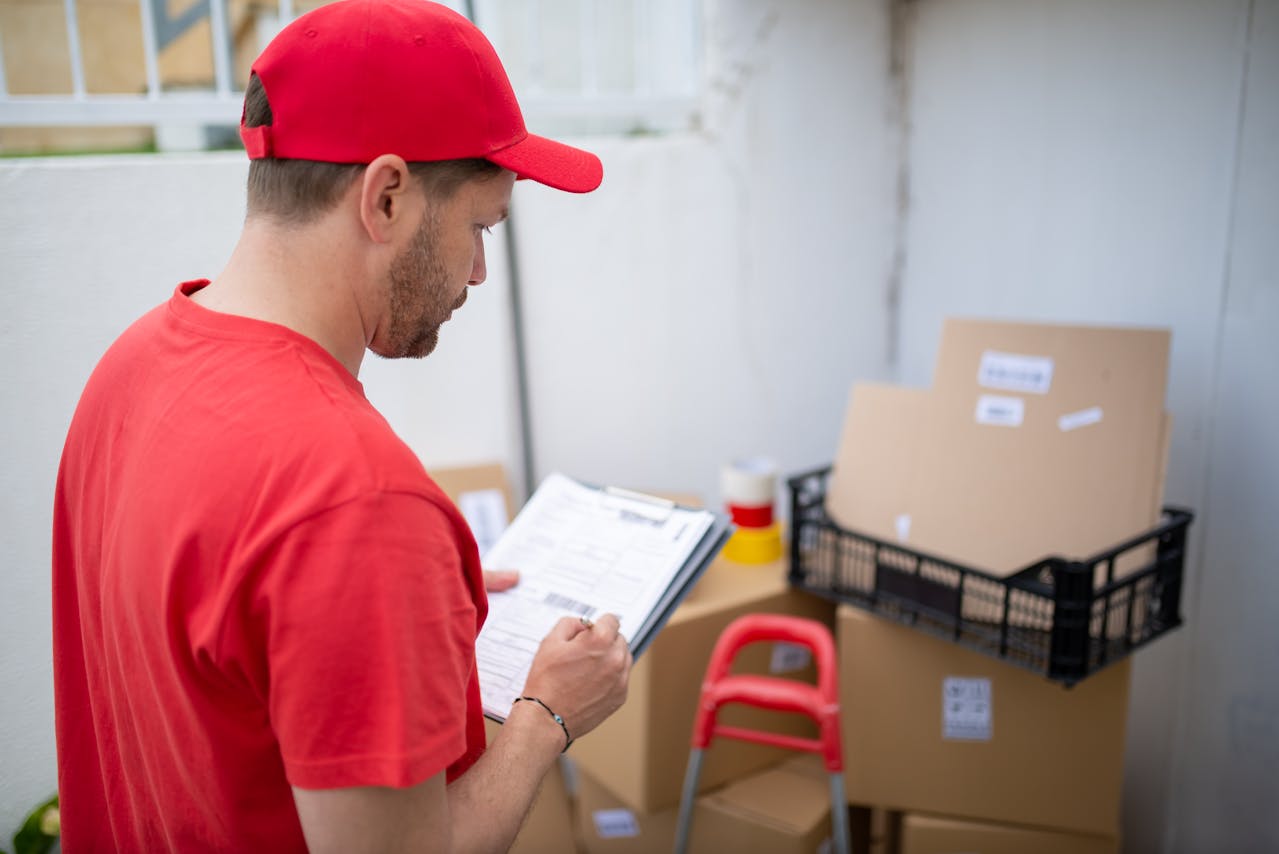
1. What does it mean when an order is being processed?
It simply means the order has been received and is now in the works. The team is picking the item from storage, packing it up, and getting it ready to ship—but it hasn’t left the warehouse just yet.
2. How is order fulfilment efficiency measured?
One way is by looking at your fulfilment rate. This tells you how many orders were completed compared to how many were placed.
Here’s the formula:
Fulfillment Rate = (Number of Orders Fulfilled ÷ Total Orders Received)
The closer you are to 100%, the smoother your fulfilment process runs.
3. What steps are involved in fulfilling an order?
Fulfilling an order involves a few key steps that help make sure everything gets to the customer smoothly. It starts with receiving the inventory and storing it properly so it's easy to access. When an order comes in, the right items are picked, packed securely, and handed off to the delivery service for shipping. The final piece is making sure the customer receives their package without issues. And if something needs to be returned, handling that quickly and professionally is just as important to keep the experience positive.
4. Can you break down the seven main stages in order fulfilment?
Sure! Here they are in order:
- Receiving products
- Storing them in your facility
- Picking items once orders come in
- Packing the orders securely
- Shipping them out
- Ensuring successful delivery
- Handling returns or exchanges if needed
5. When is an order considered complete?
Once the customer receives their package, the order is officially fulfilled. If there’s no need for a return or exchange, that’s the end of the process.
6. How do you start an order fulfilment service?
First, map out what you need: warehouse space, software, staff, funding, and a plan for how you’ll receive, store, and ship products. Set clear goals, choose a good location, and invest in tools that make the job easier. Once you're up and running, keep refining your systems to improve speed, accuracy, and customer satisfaction.


